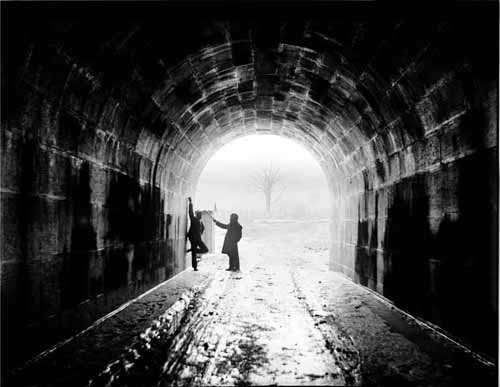
Jacqui Cannata was about six when she started cutting off people’s heads. She got better with the camera. Especially useful were her photography courses at high school in Newmarket, Ont., where she also learned old-fashioned darkroom techniques.
Still, she’d always regarded the camera as a sideline. It was the Fenian rebellions and other aspects of Irish Catholic history that brought her to U of G for her master’s degree in 2007. A year later, she began a doctorate on the topic.
Old photos kept coming up in her research. It wasn’t long before Cannata realized that what really grabbed her were those images themselves.
Now working with history professor Alan Gordon, she studies photography to see what she can see about how images of rural lives and livelihoods were shaped by emerging camera technology. She’s especially interested in photos taken by professionals and amateurs in southern Ontario between 1870 and 1920. How did their portrayals create an honest or not-so-faithful picture of country life that shaped − and continues to shape − the way we look at rural history and heritage? Questions about modernity and memory hover just outside the frame, she says.
Early this month Cannata discussed her interests as part of the department’s rural history roundtable series. “It’s not just the history of rural Ontario through the camera but the act of photo-taking and –making.”
Take Reuben Sallows, a professional whose shots of farm country were used by governments and farm periodicals to help entice immigrants needed to develop southern Ontario. He did his job well, perhaps too well. As with other pros such as John Connon and Duncan Donovan, he often depicted a rustic, romantic ideal.
Sentiment aside, there’s no denying the artistry of their early work, says Cannata. Connon developed a specialty in portraits and landscapes around Elora, Ont. “He was a really innovative guy,” she says, pointing to his early version of a pan camera.
Amateur photographers brought their own sensibilities to the lens. They were no less keen than the pros about the new technology, says Cannata, but they were more interested in recording their lives unvarnished.
Some farmers took their new devices into their fields to record workaday activities. Human subjects were often secondary to the farm, the landscape and the animals. A prize calf was a thing worth recording. So was poultry: one collection Cannata found contained nothing but shots of chickens.
One of her favourite shots is a photo by amateur Stephen Sylvester Main, taken from inside a carriage tunnel running under the Welland Canal. She likes his composition and use of lighting to infuse drama into a fairly utilitarian subject.

She says original glass-plate negatives exist in various archives around Ontario, from small- town collections to the provincial archives in Toronto. They’re also here at the U of G Library, where Archival and Special Collections holds samples in its agricultural history and rural heritage section.
She worked with a photographer friend, Michelle Gingras, to evaluate early photographers’ work.
Paul Stack, a U of G library associate, says some of Cannata’s found images resonate with his memories of growing up on an Ontario farm. Referring to her project, he says, “I think it’s important because it shows images of ourselves. It says something about people’s idea of themselves.”
Cannata enjoys noting mistakes photographers made as they experimented with the technology: focus and exposure problems, wonky chemicals. She also continues to experiment at home and outside with her own digital SLR, a Canon XTi and a Diana F+. She’s interested in combining painting and photography, using techniques common around the start of the 1900s, as well as PhotoShop, to create composite images.